Tall Order for Short Corn: The Latest On Short-Stature Hybrids
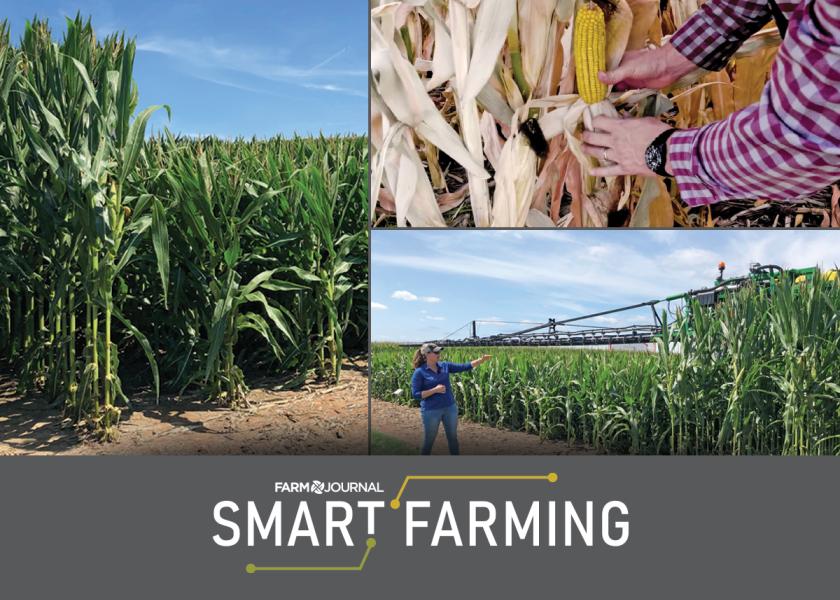
The massive derecho that swept across parts of five Midwest states in August 2020 spawned 125 mph-plus straight-line winds, torrential rain and large hail. In the process, the storm damaged millions of crop acres, including 550,000 acres of Iowa corn USDA deemed were not harvestable.
“As you drove around this area, the only corn that was standing happened to be short-stature hybrid corn,” recalls Sean Blomgren, a farmer and owner of Blomgren Seed based in central Iowa, near Boone. “We seem to be in an area prone to high wind pressure, so there’s certainly some peace of mind with using this technology.”
Compact corn hybrids appear to take winds 50 mph, and sometimes higher, in stride with little greensnap or lodging resulting. However, yield performance across the seed industry hasn’t been as consistent, and technology providers are working to change that.
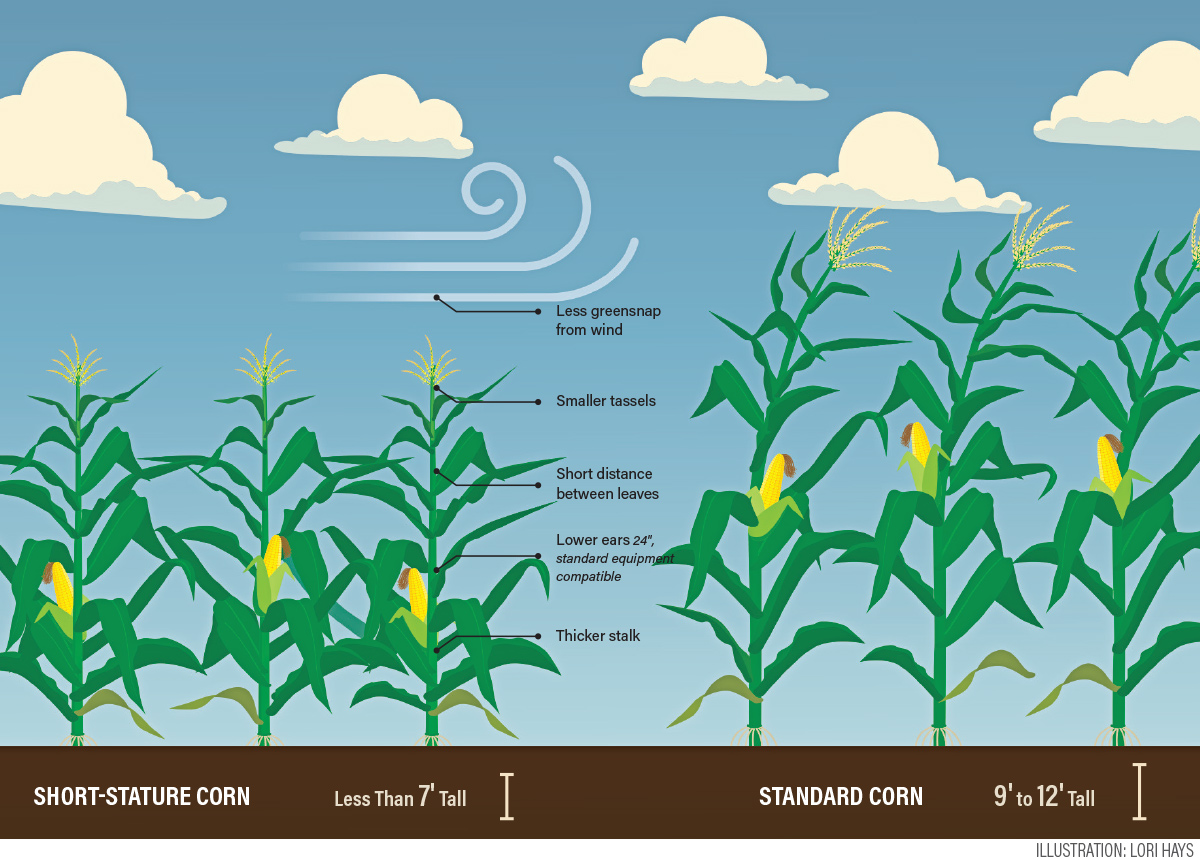
Blomgren says the performance he’s seen from short-stature corn varieties has been comparable to standard-sized hybrids. In 2023, he and two customers grew three hybrids that are part of the Bayer Preceon Smart Corn System hybrid lineup. Yield results ranged from the low 250s per acre to nearly 300 bu. per acre, all dryland production.
“I would say the short-stature corn both met and exceeded our expectations,” reports Blomgren, who grew 85 acres of the corn. “It was at or near the top of each farm’s corn yields, which is really encouraging.”

On Different Paths
Along with Bayer, Corteva AgriScience and Iowa-based Stine Seed Company are working in the shorter corn arena, but the companies have taken different paths to developing the technology.
Bayer anticipates its current short-stature hybrid lineup, which has been conventionally bred, will be grown commercially on up to 40,000 Midwest acres this year. The hybrids feature a native trait that shortens the internodes below the corn ear, resulting in more compact plants, according to Eric Blinka, technology development representative for Bayer. He says the company is also developing genetically modified short-stature hybrids, which it plans to market more broadly later this decade.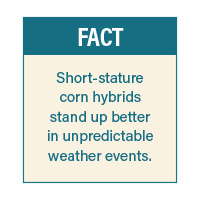
Corteva is evaluating multiple approaches in its research efforts to develop what it calls reduced stature corn. Researchers there have invested more than a decade in evaluating traits to develop shorter, stronger corn plants with increased yield potential, according to Cory Christensen, corn pipeline development leader for the company.
Corteva will have research field trials of reduced stature hybrids in place this summer for farmers to evaluate and the company anticipates commercial release of some native trait reduced stature hybrids mid-decade.
Ahead Of The Curve
Stine Seed Company has evaluated corn plant height since 1996. That effort, along with founder Harry H. Stine’s focus on researching planting populations and row widths, led the company long before its competitors to develop genetics that are able to produce shorter, more efficient corn plants that thrive in higher populations.
About one-third of Stine’s 2024 corn product lineup features shorter stature hybrids, and the company predicts a similar forecast for 2025. Any hybrid shorter than 90" is considered shorter stature corn, according to Myron Stine, company president.
“The reality is, we don’t really care if the corn is short or tall, but we have found as we push genetics to their highest potential, and as we yield-screen brand-new genetics every year, the high-yielding, high-performing ones tend to be shorter than most of the genetics available out there,” he says.
Stine’s research shows part of the equation of pushing corn genetics to yield more means packing more plants into each acre.
“Today, on highly productive ground, 38,000 to 42,000 plants per acre is the common range,” Stine says. “Someday, you’ll be in the mid- to upper 40s for finished populations. When that happens, you’ll have smaller, shorter plants and individual plants will have less biomass above the ground.”
That was Blomgren’s personal experience with the Preceon Smart Corn System hybrids last season. He and two customers planted the hybrids at variable populations ranging from 35,000 to 43,000 plants per acre in 20" and 30" row widths.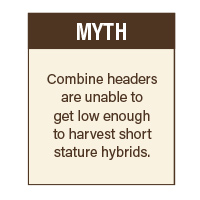
“While the stalk integrity of the short-stature corn was absolutely outstanding, it didn’t retain as much of its leaf material in the upper portion of the plants,” Blomgren says.
Intensive Management Helps
As higher plant populations are being used, more meticulous input management will be needed, according to Mark Licht, Iowa State University Extension cropping systems specialist. The good news is farmers are able to make later season agronomic decisions when growing shorter corn varieties.
“There is a prolonged period of time for herbicide applications and sidedressing nitrogen and more flexibility for post-pollination fungicide and insecticide applications using ground-based equipment,” says Licht. He evaluated three field trials of short-stature corn last year near Ames.
Treyson Culwell, a fourth-generation farmer and seedsman for Channel, grew a 5-acre test plot of three traited, short-stature corn hybrids last year and saw the crop respond positively to late-season agronomic practices.
“We were able to apply a fungicide and 22 gal. of nitrogen per acre after tassel with a self-propelled sprayer, which we wouldn’t be able to do in our regular corn,” Culwell says, who grows 2,200 acres of corn and soybeans in northeast Missouri, near Vandalia.
Blomgren says the season-long access that shorter hybrids offer could change the amount and type of nutrients he decides to apply.
“We’ve learned timing nitrogen applications is just as important as the amount of nitrogen you apply,” he says. “In 2024, I think we’ll likely decrease our anhydrous and then likely add an application or even two of nitrogen in season. I can make the applications by myself when I think it’s important, as opposed to having to rely on an expensive retail application or third-party application.”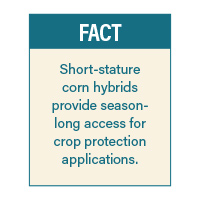
Harvest Considerations
Mike Kavanaugh says farmers who are new to growing shorter corn will need to give more attention to how they set up their combines for harvest. The hybrids have a target ear height of about 24", which makes them compatible with standard harvest equipment.
“We’ve been concerned about ear height the last couple of years with the very dry conditions, but so far ear height has been maintained at between 18" and 24", which is pretty incredible really,” says Kavanaugh, corporate product and development manager for AgReliant Genetics.
To pull in corn ears but not the stalks, Licht advises farmers to make sure they correctly set the stripper plates and gathering chains.
“This is important because the stalks have less lignin and, therefore, the head setting might need to be adjusted differently,” he says.
Blomgren, whose fields are flat and open, says he and his customers experienced no difficulty harvesting short-stature hybrids last year, but he would be concerned about combining the corn on fields with much of a slope.
“With how close you’re running that header to the ground, it certainly is something you have to be very aware of and could slow you down,” he says.
Managing the shorter corn stalks and plant matter is another factor Blomgren encourages farmers to think through as they plan harvest.
“If you’re running the header for a standard hybrid, a lot of that material is allowed to pass underneath,” he says. “In short corn, where you’re running the head close to the ground, that material has to find somewhere to go.”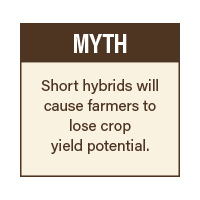
Where To From Here?
As he looks to the future, Stine says he expects to see steady adoption of shorter stature corn, though he says not all farmers will want to fine-tune their agronomic practices to accommodate the hybrid’s management requirements.
“We’ve been doing this for years, and adoption hasn’t been rapid. It will be over 5%, but it won’t be 80%. Probably 25% to 35%,” he predicts. “If we get that type of adoption of short-stature corn on the U.S. corn acre in 10 years that would be high, and that would be good.”
For his part, Culwell shares that he intends to grow a test plot of short-stature corn again this season and evaluate how it performs.
“This technology gives corn growers some new management options they haven’t had access to before; that’s a big thing,” he says. “Don’t be afraid to try something new. Stay positive and see if it works for your farm.”







